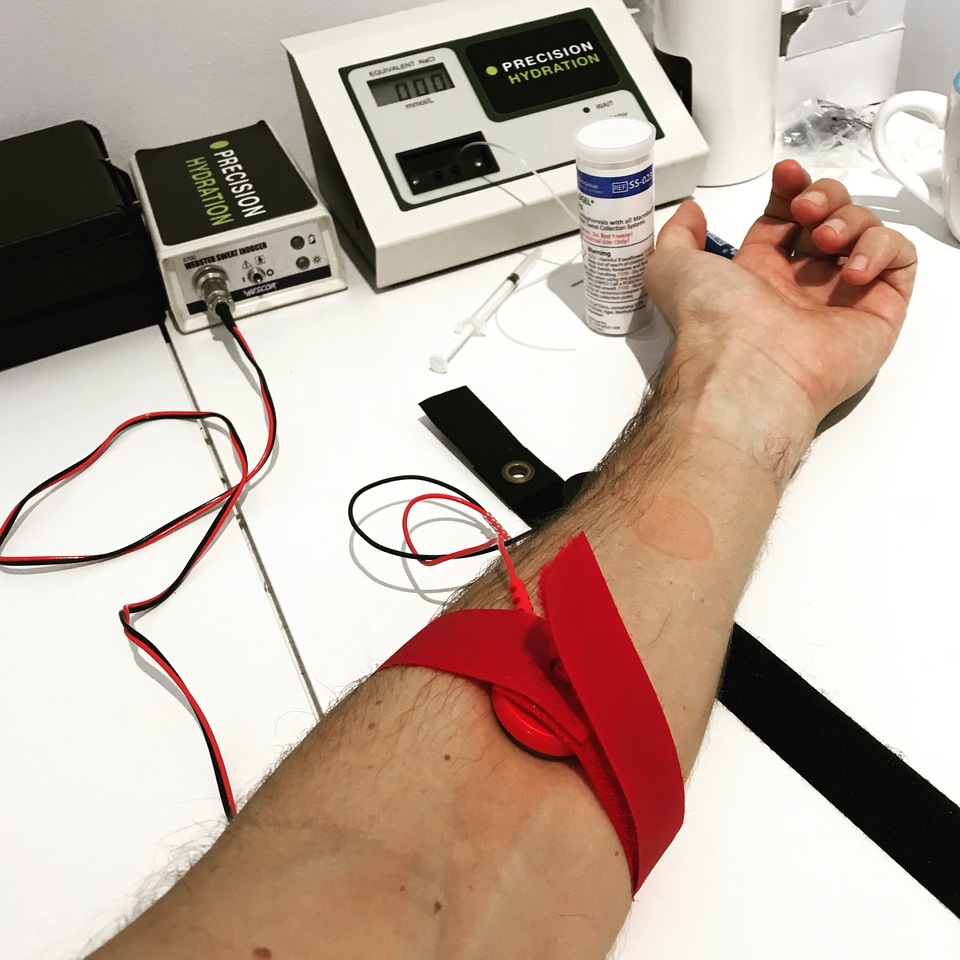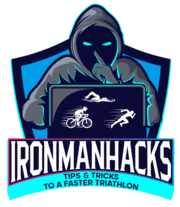Of the five main electrolytes, sodium may be the most important in terms of nutrition planning for a race. This is excreted in your sweat. So if we know how much sodium is in your sweat and what your sweat rate is, we can measure your sodium loss.
Then, we can replace your sodium accordingly so your body can continue to perform well.
If you do not replace your sodium, you may subject yourself to hyponatremia, or a low sodium concentration in the blood. Things may get hazy for you and it may be hard to think, you’ll start feeling light-headed, get a headache, and basically feel terrible.
You’ll bonk.
It’s common enough, and it has probably happened to you. In fact, it happens to about 10% of those who participate in endurance sports events (reference).
The good news, however, is that you can have your sodium concentration tested in terms of mg of sodium lost per litre of sweat. A device stimulates your skin to produce a bit of sweat which is pulled up into a thin tube. It is then processed and checked for its sodium level.
No blood is taken, it’s painless, and takes just a few minutes.

I had mine tested, and it is more than 1,400mg per litre of sweat. This is bad news for me because that’s a very high figure, and I live in a very hot and humid climate.
So that means I need to replace a lot more sodium than those who lose an average amount, like 800mg, for example.
The next variable, is knowing how much sweat you lose. To determine this, weigh yourself, ideally with no clothes on. Using a digital scale is best.
Then, do your exercise and get sweating. Come back to the scale and weigh yourself again. The weight difference is your sweat loss.
Obviously, if you drink or eat during your training, that will affect the result, and you may have to subtract that out. But if you do this enough, over varying conditions and sports, you will be able to put together a picture of your sweat losses.
Over time, if you document it properly, you should have a picture of your sweat loss rates on the bike, on the run, in hot weather, at night, over longer runs, shorter runs, etc.
Let’s say you figure out that you lose one-half litre of sweat per hour in cooler weather, while cycling.
And you’ve been sodium tested, and you lose 750mg of sodium per litre of sweat.
That would mean you lose 375mg of sodium per hour on the bike in those conditions. Not too bad.
But then, imagine that you found out that you sweat 1.25 litres per hour while running in hot an humid conditions.
That would mean you lose 937.5mg of sodium running in those hotter conditions. Quite a difference.
So, you would then know to replace all that sodium on the run, and there are plenty of products out there to help you do that.
Of course the Ironman Hacks nutrition calculator takes sodium into account, too, so it’ll calculate just how many servings you need of whatever product you may have.
Here are some resources about getting sweat tested:
Koda nutrition home-test
Levelen
ENRG Performance
Precision Hydration online test
UCAN has a great electrolyte product called Hydrate, and it has more sodium per gram than any other product I’ve seen out there.
Get 15% off all UCAN products using the promo code “IRONMANHACKS” at checkout.
(I will earn a small commission if you buy from that link – thanks.)
